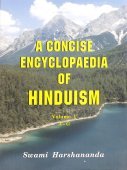Krishnajina, Kṛṣṇājinā, Kṛṣṇājina, Krishna-ajina: 12 definitions
Introduction:
Krishnajina means something in Buddhism, Pali, Hinduism, Sanskrit, Marathi. If you want to know the exact meaning, history, etymology or English translation of this term then check out the descriptions on this page. Add your comment or reference to a book if you want to contribute to this summary article.
The Sanskrit terms Kṛṣṇājinā and Kṛṣṇājina can be transliterated into English as Krsnajina or Krishnajina, using the IAST transliteration scheme (?).
In Hinduism
Purana and Itihasa (epic history)
Source: Cologne Digital Sanskrit Dictionaries: The Purana IndexKṛṣṇājina (कृष्णाजिन).—As clothing of tapasvins; used for ritual purposes; a good article for gift.1 Also used by religious students as when Keśidhvaja had it when he visited Khāṇḍikya for instruction.2
- 1) Matsya-purāṇa 47. 89; 82. 3; 204. 11; 206. 1-41; 245. 85; 279. 5; Vāyu-purāṇa 25. 34 and 81; 30. 221; 74. 4; 99. 410; Viṣṇu-purāṇa I. 11. 31.
- 2) Viṣṇu-purāṇa VI. 6. 20. and 22.

The Purana (पुराण, purāṇas) refers to Sanskrit literature preserving ancient India’s vast cultural history, including historical legends, religious ceremonies, various arts and sciences. The eighteen mahapuranas total over 400,000 shlokas (metrical couplets) and date to at least several centuries BCE.
In Buddhism
Mahayana (major branch of Buddhism)
Source: Wisdom Library: Maha Prajnaparamita SastraKṛṣṇājinā (कृष्णाजिना) is one of the two children of prince Viśvantara according to a note from the 2nd century Mahāprajñāpāramitāśāstra (chapter XX).—“Viśvantara, or Vessantara, was a young prince who had a passion for generosity. He had a white elephant endowed with the magical power of bringing the rains. A neighboring king whose land was afflicted with aridity, asked for the animal. Viśvantara gave it to him; his countrymen were furious and demanded his punishment. The generous prince had to leave in exile, accompanied by his wife Madrī who wanted to share his exile and their two children, Jālin and Kṛṣṇājinā”.

Mahayana (महायान, mahāyāna) is a major branch of Buddhism focusing on the path of a Bodhisattva (spiritual aspirants/ enlightened beings). Extant literature is vast and primarely composed in the Sanskrit language. There are many sūtras of which some of the earliest are the various Prajñāpāramitā sūtras.
Languages of India and abroad
Marathi-English dictionary
Source: DDSA: The Molesworth Marathi and English Dictionarykṛṣṇājina (कृष्णाजिन).—n S (Lit. Hide of the black antelope.) Antelope's hide; deer skin gen.
Source: DDSA: The Aryabhusan school dictionary, Marathi-Englishkṛṣṇājina (कृष्णाजिन).—n (Lit. Hide of the black ante- lope.) Antelope's hide, deer skin.
Marathi is an Indo-European language having over 70 million native speakers people in (predominantly) Maharashtra India. Marathi, like many other Indo-Aryan languages, evolved from early forms of Prakrit, which itself is a subset of Sanskrit, one of the most ancient languages of the world.
Sanskrit dictionary
Source: DDSA: The practical Sanskrit-English dictionaryKṛṣṇājina (कृष्णाजिन).—the skin of the black antelope.
Derivable forms: kṛṣṇājinam (कृष्णाजिनम्).
Kṛṣṇājina is a Sanskrit compound consisting of the terms kṛṣṇa and ajina (अजिन).
Source: Cologne Digital Sanskrit Dictionaries: Edgerton Buddhist Hybrid Sanskrit DictionaryKṛṣṇājinā (कृष्णाजिना).—(= Pali Kaṇhājinā), name of the daughter of Viśvaṃtara: Jātakamālā 59.22 ff.; in 63.14 short form Kṛṣṇā, as in Pali (Kaṇhā).
Source: Cologne Digital Sanskrit Dictionaries: Benfey Sanskrit-English DictionaryKṛṣṇājina (कृष्णाजिन).—n. the hide of the black antelope.
Kṛṣṇājina is a Sanskrit compound consisting of the terms kṛṣṇa and ajina (अजिन).
Source: Cologne Digital Sanskrit Dictionaries: Cappeller Sanskrit-English DictionaryKṛṣṇājina (कृष्णाजिन).—[neuter] the skin of the black antelope.
Source: Cologne Digital Sanskrit Dictionaries: Monier-Williams Sanskrit-English Dictionary1) Kṛṣṇājina (कृष्णाजिन):—[from kṛṣṇa] n. the skin of the black antelope, [Atharva-veda; Taittirīya-saṃhitā; Śatapatha-brāhmaṇa; Aitareya-brāhmaṇa] etc.
2) [v.s. ...] m. ‘covered with a skin of the black antelope’, Name of a man, and m. [plural] his descendants [gana] upakādi and tikakitavādi, [Kāśikā-vṛtti on Pāṇini 5-3,82 and 6-2, 165]
[Sanskrit to German]
Sanskrit, also spelled संस्कृतम् (saṃskṛtam), is an ancient language of India commonly seen as the grandmother of the Indo-European language family (even English!). Closely allied with Prakrit and Pali, Sanskrit is more exhaustive in both grammar and terms and has the most extensive collection of literature in the world, greatly surpassing its sister-languages Greek and Latin.
Kannada-English dictionary
Source: Alar: Kannada-English corpusKṛṣṇājina (ಕೃಷ್ಣಾಜಿನ):—[noun] the skin of the black spotted antelope, used to sit on.
Kannada is a Dravidian language (as opposed to the Indo-European language family) mainly spoken in the southwestern region of India.
See also (Relevant definitions)
Partial matches: Krishna, Ajina.
Starts with: Krishnajinadanapaddhati, Krishnajinagriva, Krishnajinambara, Krishnajinasina.
Full-text: Krishnaka, Adhahkrishnajinam, Ajina, Karshnajini, Krishnamjina, Krishnanjana, Krishnajinagriva, Krishnajinin, Pratinaha, Yajnasutra, Yajnayudha, Jalin, Madri, Vishvantara, Surya, Griva, Shravanadvadashi.
Relevant text
Search found 9 books and stories containing Krishnajina, Krishna-ajina, Kṛṣṇa-ajina, Krsna-ajina, Kṛṣṇājinā, Kṛṣṇājina, Krsnajina; (plurals include: Krishnajinas, ajinas, Kṛṣṇājinās, Kṛṣṇājinas, Krsnajinas). You can also click to the full overview containing English textual excerpts. Below are direct links for the most relevant articles:
Cosmetics, Costumes and Ornaments in Ancient India (by Remadevi. O.)
1. Materials for Garments (d): Skin clothes from Animals < [Chapter 2 - Costumes]
Chaitanya Bhagavata (by Bhumipati Dāsa)
Verse 1.2.162 < [Chapter 2 - The Lord’s Appearance]
Amarakoshodghatana of Kshirasvamin (study) (by A. Yamuna Devi)
Belief in the presence of evil spirits < [Chapter 4 - Cultural Aspects]
The Sacrifices of Rajasuya, Vajapeya and Ashvamedha (study) (by Aparna Dhar)
Use of Sacrificial Utensils or Yajñayudha < [Chapter 2 - Vedic Sacrifices described in the Śatapatha Brāhmaṇa]
Maha Prajnaparamita Sastra (by Gelongma Karma Migme Chödrön)
Part 6 - Viśvantara-Jātaka (or Vessantara-jātaka) < [Chapter XX - The Virtue of Generosity and Generosity of the Dharma]
Satirical works of Kshemendra (study) (by Arpana Devi)
2. Kṣemendra’s Family < [Chapter 2 - Kṣemendra: His Life and Works]
Related products
